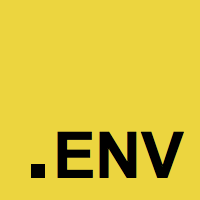
Research
/Security News
Weaponizing Discord for Command and Control Across npm, PyPI, and RubyGems.org
Socket researchers uncover how threat actors weaponize Discord across the npm, PyPI, and RubyGems ecosystems to exfiltrate sensitive data.
dotenv-override-true
Advanced tools
It's dotenv, but by default overrides system environment variables
It's dotenv, but by default overrides system environment variables.
This project is a fork of motdotla/dotenv. The difference is this project by default overrides system environment variables.
You can
node -r dotenv-override-true/config index.js
to use your own environment variables in .env without changing any code in index.js.
The original project doesn't have an easy way to achieve above.

Dotenv is a zero-dependency module that loads environment variables from a .env file into process.env. Storing configuration in the environment separate from code is based on The Twelve-Factor App methodology.
# with npm
npm install dotenv
# or with Yarn
yarn add dotenv
As early as possible in your application, require and configure dotenv.
require('dotenv').config()
Create a .env file in the root directory of your project. Add
environment-specific variables on new lines in the form of NAME=VALUE.
For example:
DB_HOST=localhost
DB_USER=root
DB_PASS=s1mpl3
That's it.
process.env now has the keys and values you defined in your .env file.
const db = require('db')
db.connect({
host: process.env.DB_HOST,
username: process.env.DB_USER,
password: process.env.DB_PASS
})
You can use the --require (-r) command line option to preload dotenv. By doing this, you do not need to require and load dotenv in your application code. This is the preferred approach when using import instead of require.
$ node -r dotenv/config your_script.js
The configuration options below are supported as command line arguments in the format dotenv_config_<option>=value
$ node -r dotenv/config your_script.js dotenv_config_path=/custom/path/to/your/env/vars
Additionally, you can use environment variables to set configuration options. Command line arguments will precede these.
$ DOTENV_CONFIG_<OPTION>=value node -r dotenv/config your_script.js
$ DOTENV_CONFIG_ENCODING=latin1 node -r dotenv/config your_script.js dotenv_config_path=/custom/path/to/.env
Alias: load
config will read your .env file, parse the contents, assign it to
process.env,
and return an Object with a parsed key containing the loaded content or an error key if it failed.
const result = dotenv.config()
if (result.error) {
throw result.error
}
console.log(result.parsed)
You can additionally, pass options to config.
Default: path.resolve(process.cwd(), '.env')
You may specify a custom path if your file containing environment variables is located elsewhere.
require('dotenv').config({ path: '/full/custom/path/to/your/env/vars' })
Default: utf8
You may specify the encoding of your file containing environment variables.
require('dotenv').config({ encoding: 'latin1' })
Default: true
When set to true, the environment variables from your env file override what is set in process.env.
# .env
PORT=8080
process.env['PORT'] = '3000'
require('dotenv').config()
console.log(process.env['PORT']) // prints 8080
Default: false
You may turn on logging to help debug why certain keys or values are not being set as you expect.
require('dotenv').config({ debug: process.env.DEBUG })
The engine which parses the contents of your file containing environment variables is available to use. It accepts a String or Buffer and will return an Object with the parsed keys and values.
const dotenv = require('dotenv')
const buf = Buffer.from('BASIC=basic')
const config = dotenv.parse(buf) // will return an object
console.log(typeof config, config) // object { BASIC : 'basic' }
Default: false
You may turn on logging to help debug why certain keys or values are not being set as you expect.
const dotenv = require('dotenv')
const buf = Buffer.from('hello world')
const opt = { debug: true }
const config = dotenv.parse(buf, opt)
// expect a debug message because the buffer is not in KEY=VAL form
The parsing engine currently supports the following rules:
BASIC=basic becomes {BASIC: 'basic'}# are treated as commentsEMPTY= becomes {EMPTY: ''})SINGLE_QUOTE='quoted' becomes {SINGLE_QUOTE: "quoted"})MULTILINE="new\nline" becomes{MULTILINE: 'new
line'}
JSON={"foo": "bar"} becomes {JSON:"{\"foo\": \"bar\"}")trim) (FOO=" some value " becomes {FOO: 'some value'}).env file?No. We strongly recommend against committing your .env file to version
control. It should only include environment-specific values such as database
passwords or API keys. Your production database should have a different
password than your development database.
.env files?No. We strongly recommend against having a "main" .env file and an "environment" .env file like .env.test. Your config should vary between deploys, and you should not be sharing values between environments.
In a twelve-factor app, env vars are granular controls, each fully orthogonal to other env vars. They are never grouped together as “environments”, but instead are independently managed for each deploy. This is a model that scales up smoothly as the app naturally expands into more deploys over its lifetime.
By default we will modify any environment variables that have already been set. In particular, if there is a variable in your .env file which collides with one that already exists in your environment, then that variable will be used. If you don't want to override it you can set the override option for config() function to false.
If you don't want to override process.env you can do something like this:
const fs = require('fs')
const dotenv = require('dotenv')
const envConfig = dotenv.config({ override: false })
For dotenv@2.x.x: Yes. dotenv.config() now returns an object representing
the parsed .env file. This gives you everything you need to continue
setting values on process.env. For example:
const dotenv = require('dotenv')
const variableExpansion = require('dotenv-expand')
const myEnv = dotenv.config()
variableExpansion(myEnv)
Try dotenv-expand
import?ES2015 and beyond offers modules that allow you to export any top-level function, class, var, let, or const.
When you run a module containing an
importdeclaration, the modules it imports are loaded first, then each module body is executed in a depth-first traversal of the dependency graph, avoiding cycles by skipping anything already executed.
You must run dotenv.config() before referencing any environment variables. Here's an example of problematic code:
errorReporter.js:
import { Client } from 'best-error-reporting-service'
export const client = new Client(process.env.BEST_API_KEY)
index.js:
import dotenv from 'dotenv'
import errorReporter from './errorReporter'
dotenv.config()
errorReporter.client.report(new Error('faq example'))
client will not be configured correctly because it was constructed before dotenv.config() was executed. There are (at least) 3 ways to make this work.
node --require dotenv/config index.js (Note: you do not need to import dotenv with this approach)dotenv/config instead of dotenv (Note: you do not need to call dotenv.config() and must pass options via the command line or environment variables with this approach)config first as outlined in this comment on #133See CONTRIBUTING.md
See CHANGELOG.md
See LICENSE
Here's just a few of many repositories using dotenv:
Here's some projects that expand on dotenv. Check them out.
FAQs
It's dotenv, but by default overrides system environment variables
The npm package dotenv-override-true receives a total of 327 weekly downloads. As such, dotenv-override-true popularity was classified as not popular.
We found that dotenv-override-true demonstrated a not healthy version release cadence and project activity because the last version was released a year ago. It has 1 open source maintainer collaborating on the project.
Did you know?

Socket for GitHub automatically highlights issues in each pull request and monitors the health of all your open source dependencies. Discover the contents of your packages and block harmful activity before you install or update your dependencies.

Research
/Security News
Socket researchers uncover how threat actors weaponize Discord across the npm, PyPI, and RubyGems ecosystems to exfiltrate sensitive data.

Security News
Socket now integrates with Bun 1.3’s Security Scanner API to block risky packages at install time and enforce your organization’s policies in local dev and CI.

Research
The Socket Threat Research Team is tracking weekly intrusions into the npm registry that follow a repeatable adversarial playbook used by North Korean state-sponsored actors.